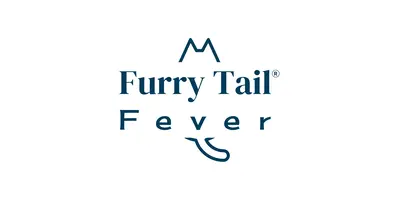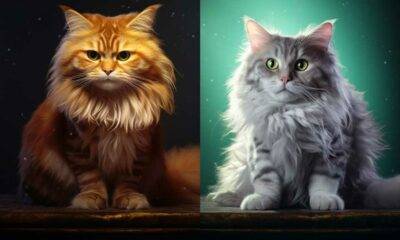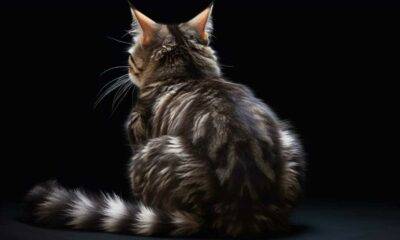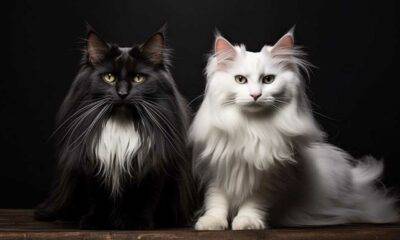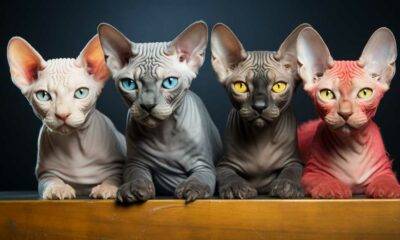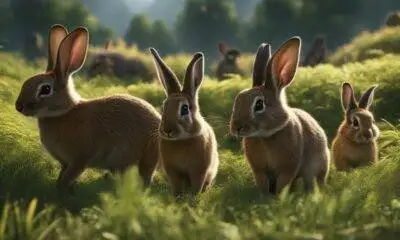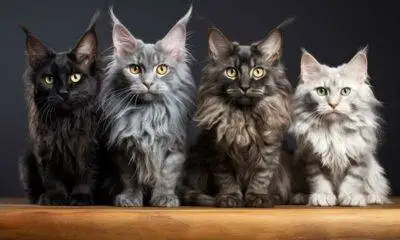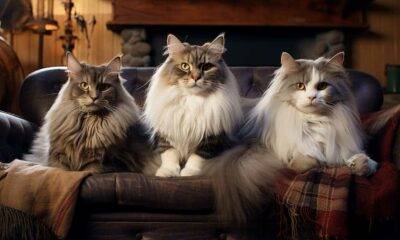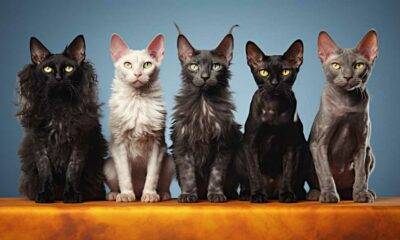cats
Spotting Nutritional Deficiencies in Your Cat: A Guide

Spotting Nutritional Deficiencies in Your Cat: A Guide
Did you know that one out of every three cats experiences nutritional deficiencies? As a responsible cat owner, it’s crucial to be proactive in ensuring the well-being of your furry companion.
That’s why we’ve put together this comprehensive guide to help you identify and address any nutritional deficiencies your cat may have. By paying attention to early signs such as changes in their coat and skin health, appetite and weight management, energy levels, and gastrointestinal issues, you can take the necessary steps to provide your cat with the proper nutrition they need.
With the information and tools provided in this guide, you’ll be equipped to keep your cat healthy and thriving. Let’s dive in and learn how to spot nutritional deficiencies in your cat.
Key Takeaways
Spotting Nutritional Deficiencies in Your Cat: A Practical Guide
When it comes to keeping your cat healthy, it’s important to pay attention and notice any signs of nutritional deficiencies. By being observant and recognizing early indications such as changes in coat and skin condition, appetite and weight management, lethargy, and gastrointestinal issues, you can take prompt action to address any potential deficiencies.
Your beloved feline relies on you for their overall well-being, which is why providing a balanced and nutritious diet is crucial. Neglecting their nutritional needs would mean depriving them of the key to good health.
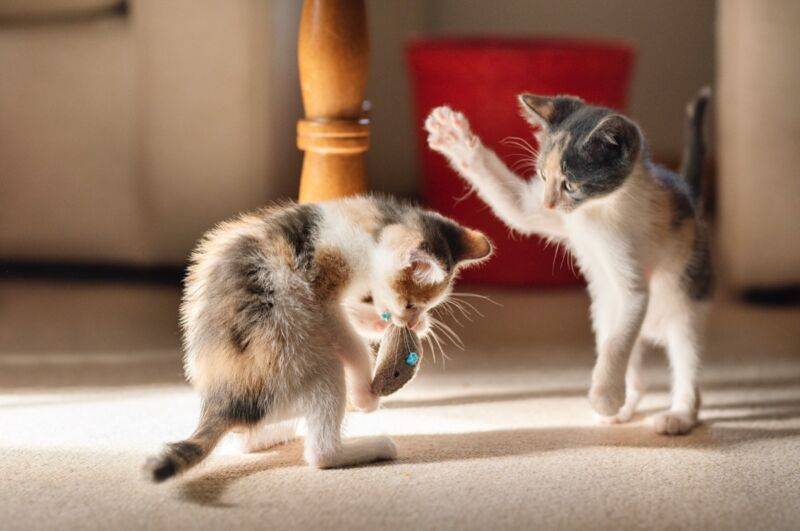
Always remember, a healthy cat is a happy cat!
Recognizing Early Signs
To identify early signs of nutritional deficiencies in your cat, closely observe their physical appearance and behavior. Pay attention to any changes in their eating habits, such as a decreased appetite or persistent begging for food. Take note of their energy levels, as deficiencies can result in either lethargy or hyperactivity. Monitor their water intake, as excessive or reduced drinking can be indicative of imbalances. Additionally, be aware of any behavioral changes like increased irritability, aggression, or excessive grooming, as these may also signal nutritional deficiencies. By keeping a close eye on these early signs, you can take proactive measures to address any potential issues and ensure your cat’s overall health and well-being.
Now, let’s move on to the topic of coat and skin health…
Coat and Skin Health
Maintaining a healthy coat and skin is essential for your cat’s overall well-being. It’s important to keep an eye out for signs of a dull or dry coat, as well as irritated or inflamed skin, as these can indicate underlying health issues.
Here are three key points to consider when it comes to your cat’s coat and skin health:
- Flea Prevention: Regularly check your cat for fleas and ticks, as these parasites can cause discomfort and skin irritation. Consult with your veterinarian to find the appropriate flea prevention methods to keep your cat free from infestations.
- Allergies and Sensitivities: Cats can develop allergies or sensitivities to certain ingredients in their food or environmental factors such as pollen or dust. These allergies may present as skin rashes, itching, or hair loss. Work with your veterinarian to identify potential allergens and make necessary dietary or environmental changes.
- Grooming: Regular brushing helps distribute natural oils and remove loose hair, which promotes a healthy coat and prevents matting. It also allows you to closely inspect your cat’s skin for any abnormalities or signs of irritation.
Appetite and Weight Management
If you want to ensure that your cat’s nutritional needs are met and maintain a healthy weight, it’s important to keep an eye on their appetite and make necessary adjustments.
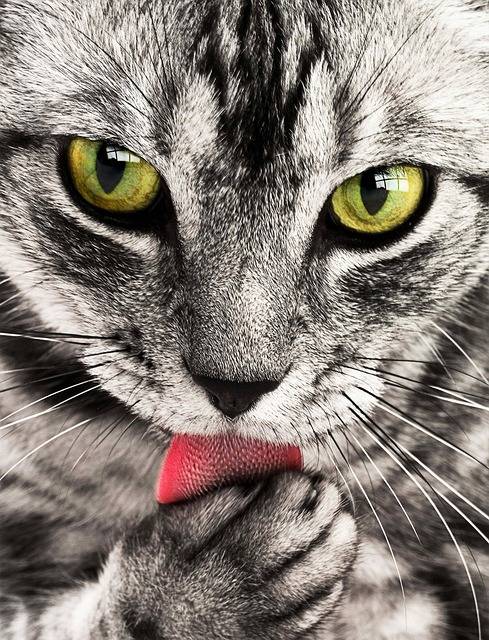
Monitoring your cat’s appetite is crucial because it helps determine if they’re getting enough nutrients or if there are any underlying health issues. Look out for significant changes in their eating habits, such as a sudden loss of appetite or excessive hunger.
Additionally, portion control is key for weight management. Feeding your cat the right amount of food can help prevent overeating and obesity. It’s recommended to consult with your veterinarian to determine the appropriate portion sizes based on your cat’s age, breed, activity level, and overall health.
Lethargy and Activity Levels
Pay attention to your cat’s energy levels and activity to spot any potential nutritional deficiencies. Changes in their activity levels can be a sign of decreased energy and lack of interest, which may indicate a nutritional deficiency.
Here are three things to look out for:
- Reduced playfulness: If your cat suddenly becomes less interested in their favorite toys or no longer engages in their usual playtime activities, it could be a sign of a nutritional deficiency.
- Sleeping more than usual: Cats are known for their napping habits, but if your cat starts sleeping excessively and seems less interested in being active, it might be worth investigating their nutrition.
- Reluctance to exercise: If your cat used to enjoy playing and exercising but now seems uninterested or sluggish, it could be a result of a nutritional deficiency affecting their energy levels.
Monitoring your cat’s activity levels is crucial in identifying any potential nutritional deficiencies. If you notice any significant changes, it’s important to consult your veterinarian for a thorough examination and appropriate dietary adjustments.
Gastrointestinal Disturbances
Keeping an eye on your cat’s gastrointestinal health is crucial for identifying potential nutritional deficiencies. Two common signs of gastrointestinal disturbances in cats are diarrhea and vomiting. Diarrhea is characterized by loose, watery stools, while vomiting involves the forceful expulsion of stomach contents. These symptoms can be caused by various factors, including dietary intolerances, infections, parasites, or underlying medical conditions.
When your cat experiences diarrhea or vomiting, it’s important to observe the frequency, consistency, and any accompanying symptoms. If these issues persist or worsen, it’s essential to consult a veterinarian for a proper diagnosis and treatment. The veterinarian may suggest dietary changes, medication, or further tests to identify the underlying cause of your cat’s gastrointestinal disturbances.

Frequently Asked Questions
How Often Should I Take My Cat to the Vet to Check for Nutritional Deficiencies?
Taking your cat to the vet on a regular basis is essential for checking for any nutritional deficiencies. These check-ups play a crucial role in monitoring your cat’s nutrition and ensuring they are getting all the necessary nutrients for their overall well-being. By keeping up with these regular visits, you can provide the best care for your feline friend and address any nutritional issues before they become more serious. Remember, your cat’s health is a top priority, and regular vet visits are an important part of their care routine.
Can Nutritional Deficiencies in Cats Lead to Behavioral Changes?
Nutritional deficiencies in cats can have an impact on their behavior. These deficiencies can cause long-term changes in how your cat behaves. It is important to recognize and address these deficiencies to ensure the well-being of your cat.
Are There Any Specific Breeds of Cats That Are More Prone to Nutritional Deficiencies?
Certain cat breeds may have a higher likelihood of experiencing nutritional deficiencies due to factors like their size, metabolism, and specific health conditions associated with their breed. It’s crucial to be aware of these potential risks and ensure that you provide your cat with the appropriate nutrition tailored to their individual needs. By understanding the unique nutritional requirements of your cat’s breed, you can help promote their overall health and well-being.
Can Nutritional Deficiencies in Cats Be Caused by a Poor-Quality Diet?
Yes, feeding cats a poor-quality diet can lead to nutritional deficiencies. It’s crucial to understand the connection between a cat’s diet and their overall nutritional health. Ensuring that your cat’s diet is balanced and provides all the necessary nutrients is essential for their well-being.
Are There Any Supplements That Can Help Prevent or Treat Nutritional Deficiencies in Cats?
Supplements can play a helpful role in preventing or treating nutritional deficiencies in cats. It’s always a good idea to consult with your veterinarian to determine the appropriate dosage based on your cat’s individual needs. By providing the necessary nutrients that may be lacking in their diet, supplements can support your cat’s overall health and well-being. Remember, each cat is unique, so it’s important to tailor the supplementation to their specific requirements. Working closely with your vet will ensure that you make informed decisions about your cat’s nutrition.
Conclusion
When it comes to your cat’s nutritional health, it’s important to be vigilant and observant. By recognizing early signs such as changes in coat and skin health, appetite and weight management, lethargy, and gastrointestinal disturbances, you can address potential deficiencies promptly.
Your feline friend relies on you for their well-being, so providing a balanced and nutritious diet is crucial. Ignoring their nutritional needs would be denying them the key to good health.
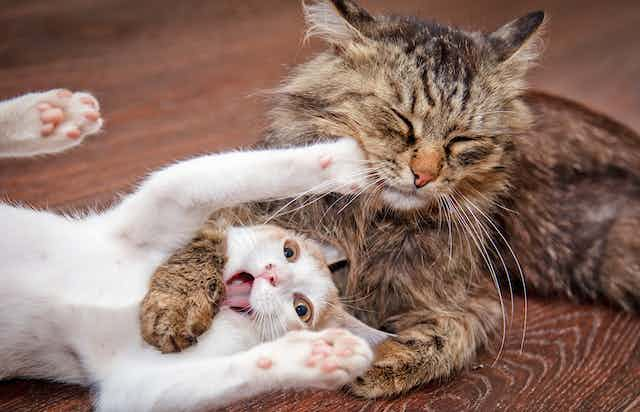
Remember, a healthy cat is a happy cat!
table, th, td { border: 1px solid black; border-collapse: collapse; padding: 10px;}
cats
Little Kitten My Favorite Cat – Play Fun Pet Care Kids Game – Fun Games For Kids & Children

By: ArcadeGaming
Title: Little Kitten My Favorite Cat – Play Fun Pet Care Kids Game – Fun Games For Kids & Children
Sourced From: www.youtube.com/watch?v=Hyju6Gwo_gs
cats
Guy Thinks He’s Lost His Foster Cat | The Dodo

By: The Dodo
Title: Guy Thinks He”s Lost His Foster Cat | The Dodo
Sourced From: www.youtube.com/watch?v=Jn4YJr_pWzY
cats
How To Train Your Cat: Two Methods You Need To Know

By: Cat School Clicker Training
Title: How To Train Your Cat: Two Methods You Need To Know
Sourced From: www.youtube.com/watch?v=LJVQINS8xFk
-

 cats8 months ago
cats8 months agoHow to Get Your Cats to Stop… Everything You Hate: Every No Needs a Yes!
-

 All Animals1 year ago
All Animals1 year agoALL about Lagomorphs Explained!
-

 All Animals11 months ago
All Animals11 months agoExplore the Wilderness: ALL about Carnivores Unleashed!
-

 Animals1 year ago
Animals1 year agoThe Wonders: ALL About Artiodactyls
-

 Cat Breeds7 months ago
Cat Breeds7 months agoWhat Are Some Rare Domestic Cat Breeds?
-

 Cat Breeds7 months ago
Cat Breeds7 months agoWhat Are the Top Family-Friendly Domestic Cat Breeds?
-

 Cat Breeds7 months ago
Cat Breeds7 months agoTop Family-Friendly Domestic Cat Breeds
-

 Cat Breeds7 months ago
Cat Breeds7 months agoDiscover Rare Domestic Cat Breeds With Our Guide
